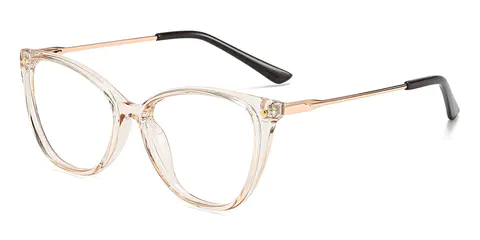Read Between the Lines: Picking the Right Spectacles for Reading

Finding appropriate reading glasses might seem like an overwhelming task, particularly with the vast array of options on the market at present. As we age, the ability to see may change, causing many to look for reading spectacles which prove to be both functional and functional and fashionable. These glasses serve as more than an instrument to aid in clear vision; they also can increase our confidence while enhancing our personal style.
When choosing the ideal pair, it’s essential to take into account multiple aspects in addition to just magnification. Ranging from lens materials to frame shapes, every detail matters in making sure that the experience of reading remains pleasant and comfortable. If you require an ordinary pair for intermittent use versus a more tailored option for daily wear, understanding what to look for will help you in making a well-informed decision that meets your eyesight requirements as well as aesthetic preferences.
Understanding The Vision Needs
As for choosing the ideal eyeglass reading glasses, the primary step is to assess your specific sight needs. Consider the range at which you typically peruse, whether it is a book, a smartphone, or a computer screen. Each reading scenario may demand different focal lengths, so realizing how you use reading glasses in your daily life will help limit the options.
It is also crucial to determine if you have any pre-existing vision issues. Conditions such as astigmatism or presbyopia can affect the kind of lenses you need. For those with these issues, customized reading glasses may be required to provide clear vision. An eye examination by a specialist can provide essential insights into any visual impairments and assist in finding the most suitable type of eyeglass reading glasses for your requirements.
Finally, think about the well-being and style tastes. Eyeglass reading glasses come in a variety of designs, materials, and colors, which can influence both performance and fashion. Selecting a pair that you feel at ease wearing for long periods while enjoying your reading sessions is key. Spend your time to try on multiple styles and fits to find the perfect match for the personality and daily use.
Types of Reading Glasses
Reading glasses come in various styles, each created to meet different needs and preferences. The most prevalent type is single vision reading glasses, which have a standard prescription across the entire lens. These are ideal for individuals who need assistance with nearby tasks, such as studying or sewing. Single vision lenses are straightforward and often chosen for their simplicity, making them readily available in many retail locations.
Another common option is dual-focus reading glasses, which include two distinct optical powers in one lens. The top portion is for distance vision while the lower part is specifically for viewing text. This design allows wearers to transition smoothly between seeing things at a distance and focusing on close objects. Bifocal lenses can be particularly useful for those who have presbyopia, a common age-related condition that affects the ability to focus on nearby objects.
Lastly, progressive reading glasses provide a more continuous option for those needing different prescriptions. These lenses have a gradient of increasing strength from the top of the lens to the bottom, allowing for clear vision at multiple distances without visible lines separating the various areas. Progressive lenses are a fantastic choice for individuals who want a more aesthetically pleasing solution and the flexibility of switching focus between distances without needing multiple pairs of glasses.
Lens Choices Explained
As you consider selecting eyeglass reading glasses, understanding the various lens choices on the market is crucial for optimal vision. The predominant type of lens for reading glasses is single-vision lenses, which are crafted specifically for close-up tasks. These lenses provide a uniform prescription across the entire lens area, enabling for clear vision at reading distance. They are ideal for individuals who only need assistance with close vision and do not need glasses for distance.
An additional common option is bifocal lenses, which include two distinct optical strengths in one lens. The upper portion is typically used for far vision, while the lower segment is designated for close viewing. This dual functionality enables wearers to switch easily between seeing objects at different distances without having to switch glasses. However, some users may find the discernible line where the two powers intersect to be a disadvantage.
Progressive lenses are gaining traction as they provide a smooth transition between various focal distances without discernible lines. This offers a more visually appealing option for those who require several prescriptions, as they can see clearly at all distance – distant, intermediate, and near. While progressives lenses may take some time to get used to, many users value the flexibility and comfort they provide for everyday activities, including perusing.
Picking the Appropriate Frame
When choosing spectacle reading frames, the style you choose plays a crucial role in both comfort and style. A properly fitted pair not only improves your look but also ensures ideal sight clarity. Consider your facial structure when making a selection; certain types suit certain features better than others. For instance, circular glasses can soften angular faces, while rectangular frames often look great on rounded faces.
The materials used are another key factor in eyewear selection. Reading frames are available in various types of materials, including acrylic, metal, and including wooden. Every material has its own unique characteristics. Acrylic glasses are lightweight and available in a variety of colors, while metal frames offer a greater timeless, sleek look. Think about your lifestyle when choosing a type; for example, if you often engage in physical activities, a durable acrylic design might be more appropriate.
Finally, take into account the dimensions of the glasses. The right size will ensure comfort and correct fit with your vision. If the frames are overly small, they can cause pain and pressure, resulting in migraines. On the other hand, glasses that are too big might move down your nose, making it difficult to focus on your reading material. Always make sure to try on different sizes and styles to find the right pair that meets your preferences.
Caring for Your Readers
Offering proper care of your spectacle vision glasses is important to make sure they continue in great form and offer you with the best vision attainable. Start by placing your glasses in a safe case when they are not in employment. This not only prevents scratches but also assists prevent accidental injury. It’s a good practice to choose a particular spot at home for your spectacles so you can always find them when required.
Cleansing your vision glasses frequently will help preserve clarity and ease. Use a gentle cloth to clean the lenses, as this type is mild and capable at removing smudges without scratching. Refrain from using paper towels or your apparel, as these can produce scratches or lint. Additionally, contemplate using a lens cleaner specifically designed for eyewear, ensuring you keep your lenses clear of residue and dirt.
Be mindful of how you treat your spectacle glasses throughout the day. Always use two hands when placing them on or off to prevent bending the frames. If your readers be] loose, take them to an optician for adjustment. Taking these simple steps will prolong the longevity of your eyeglass glasses, maintaining them operational and seeming excellent for years to ahead.

